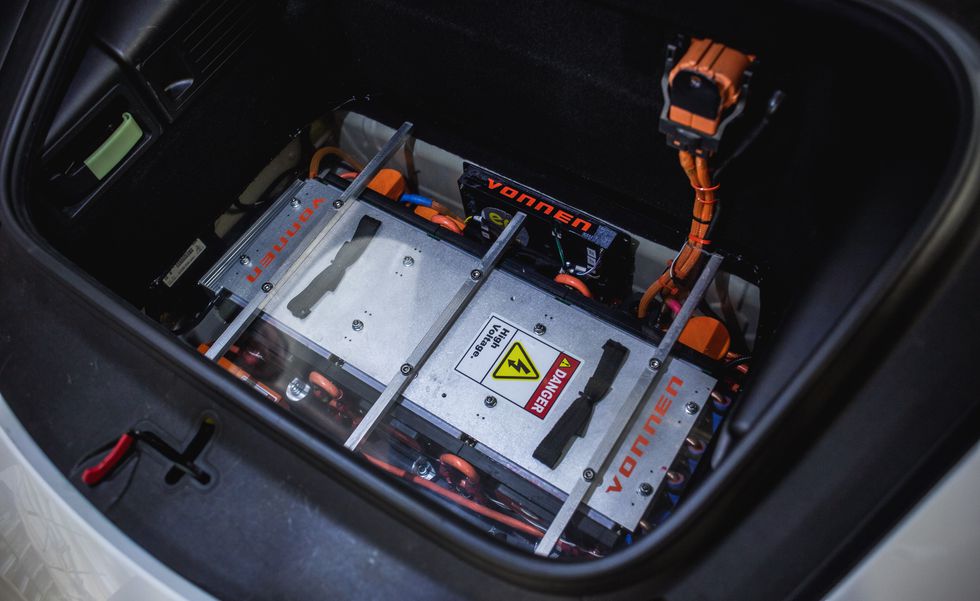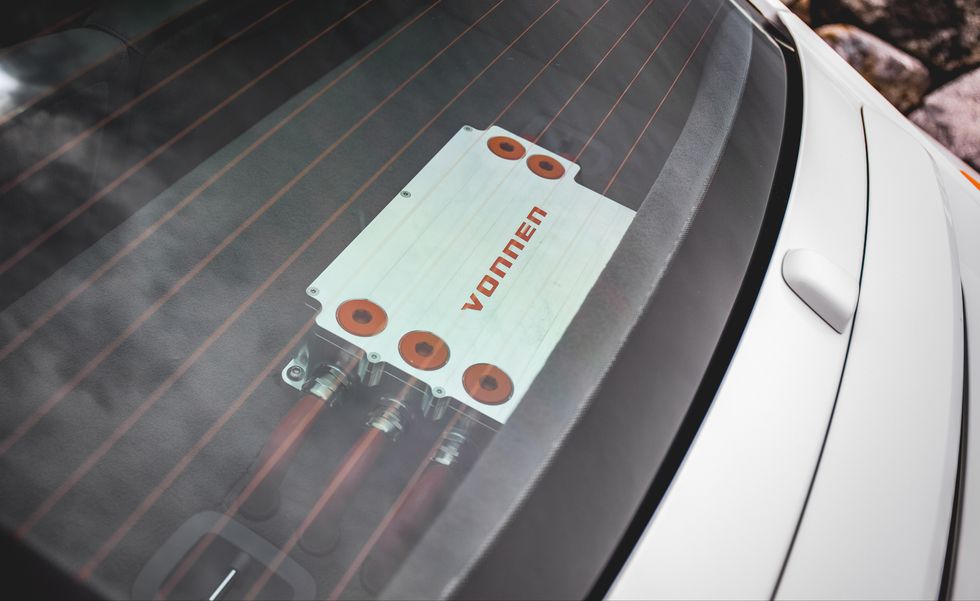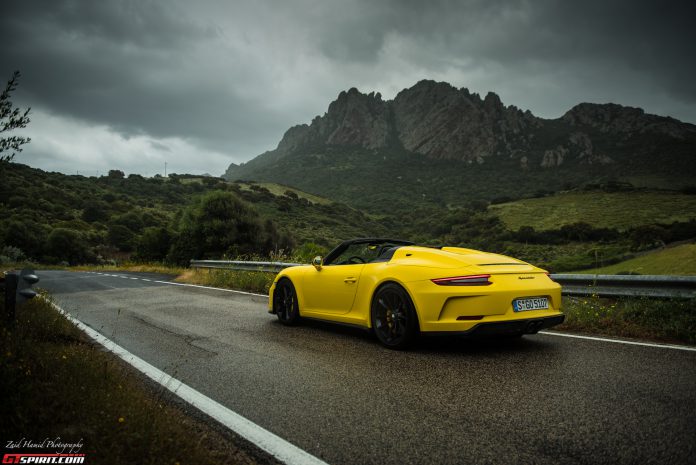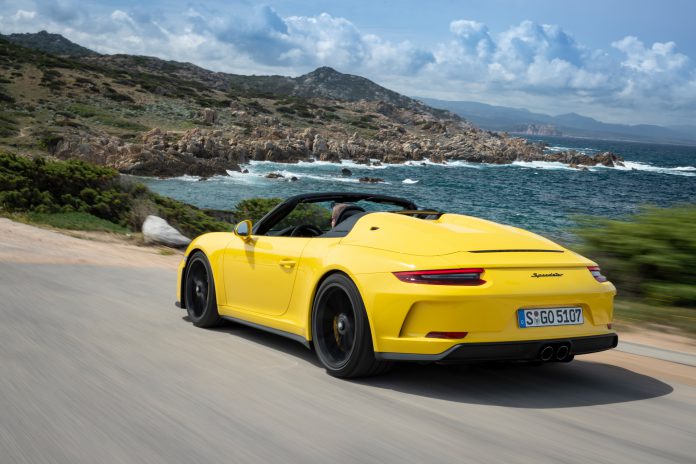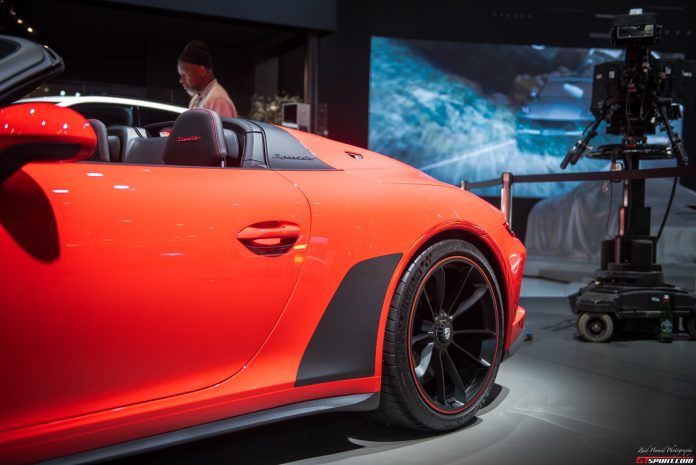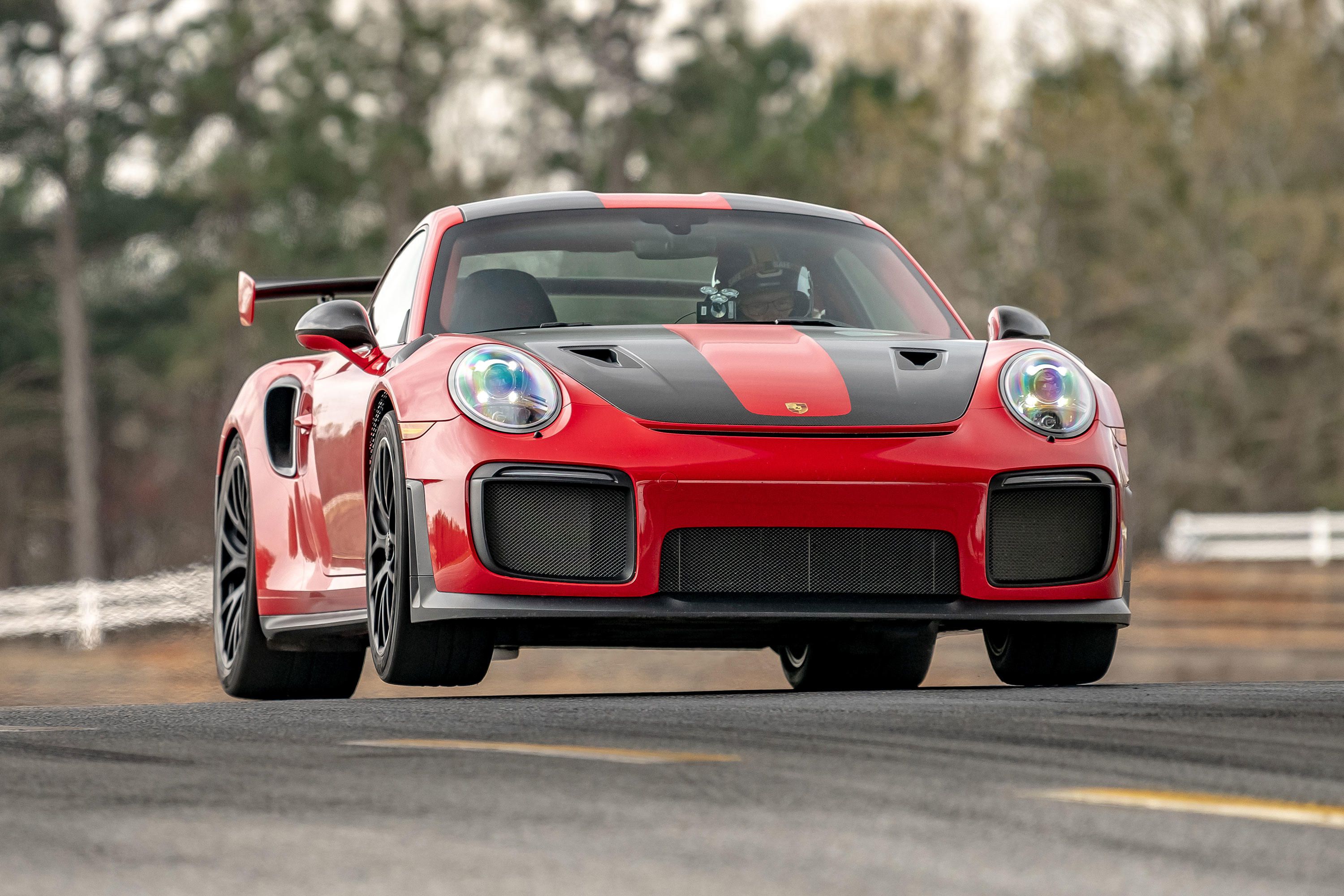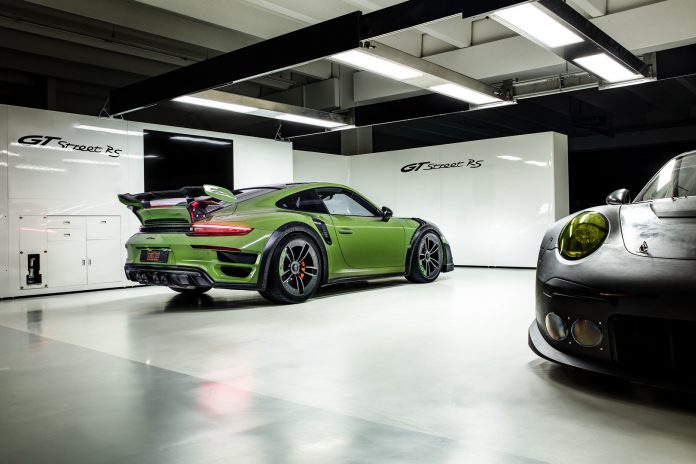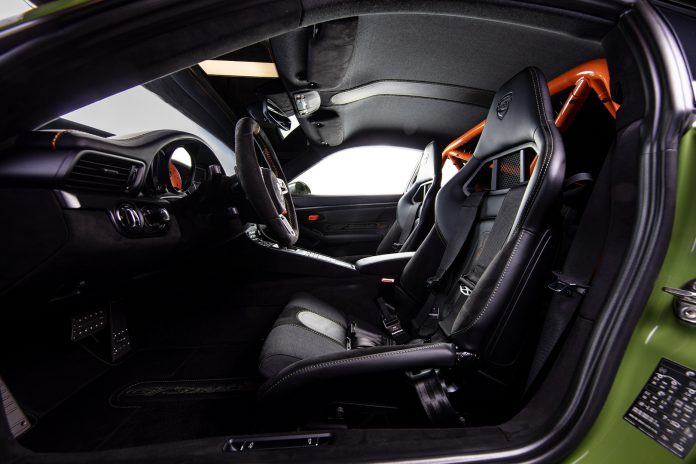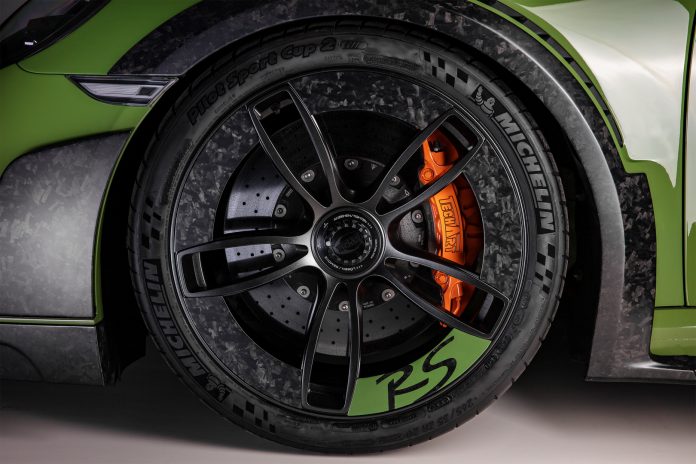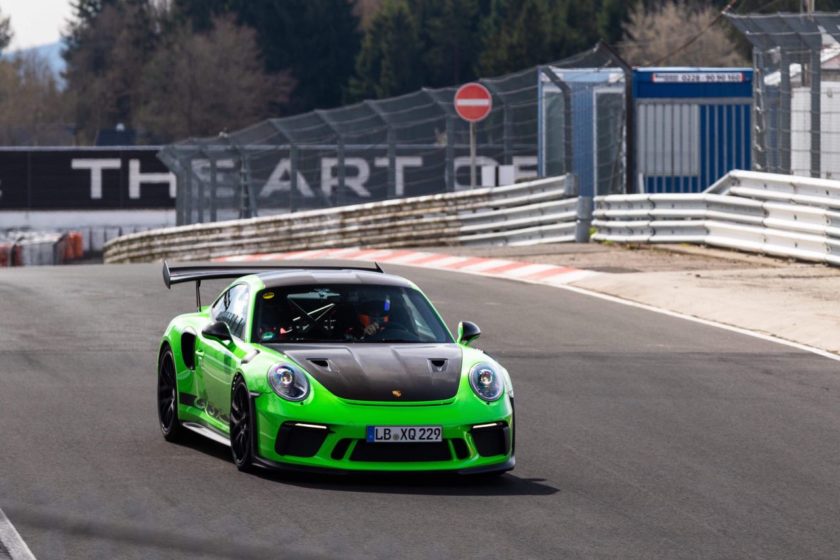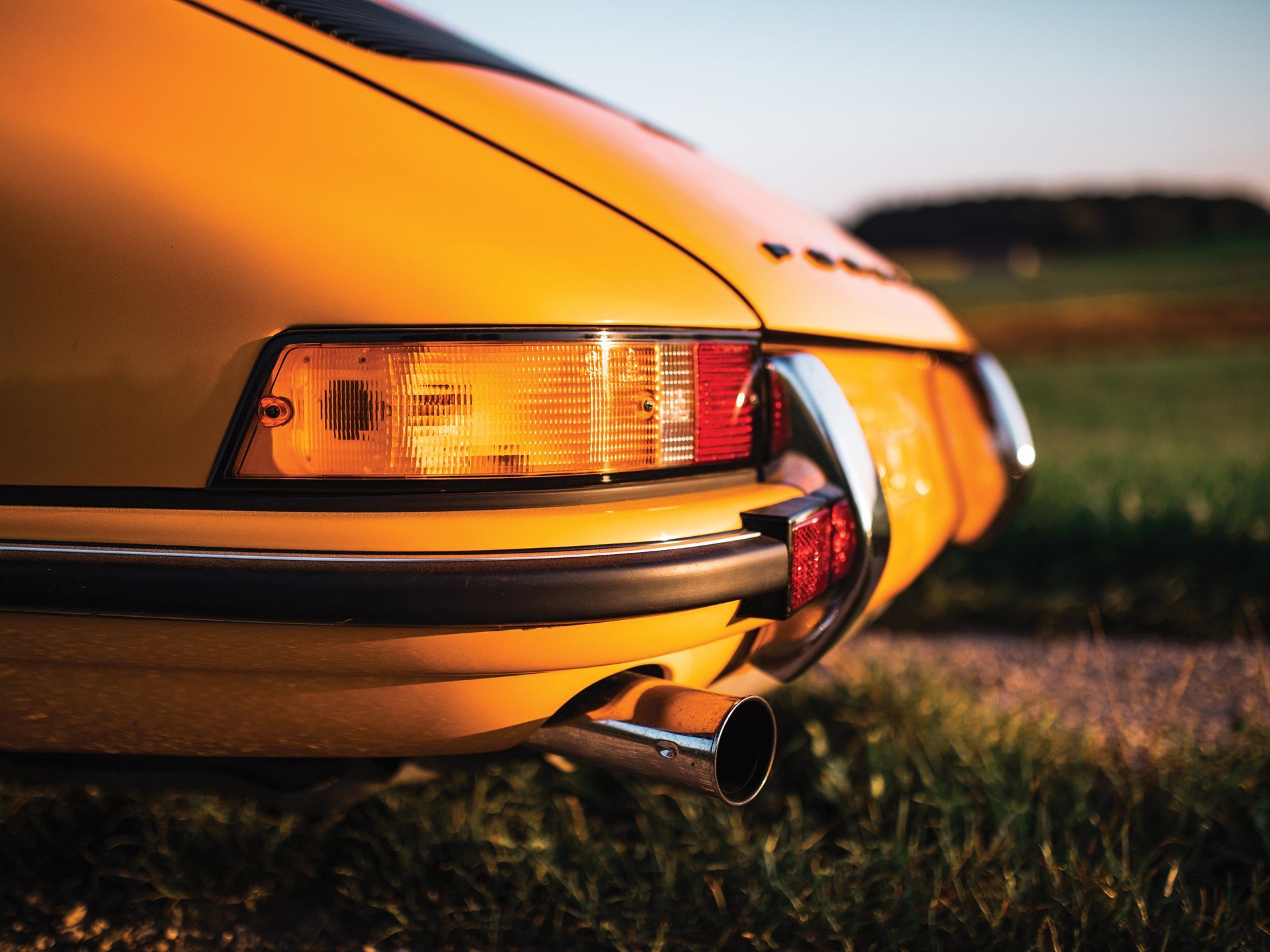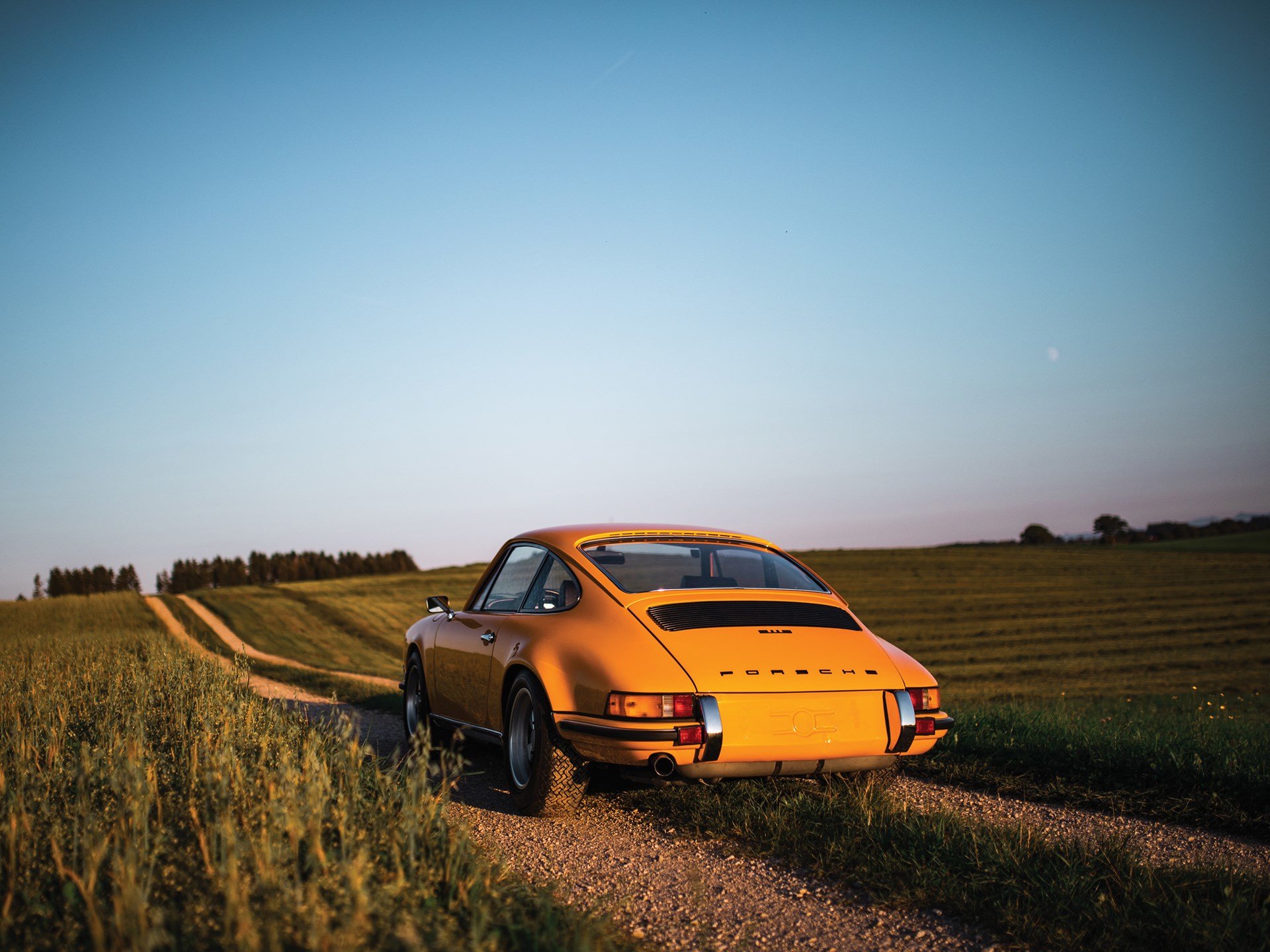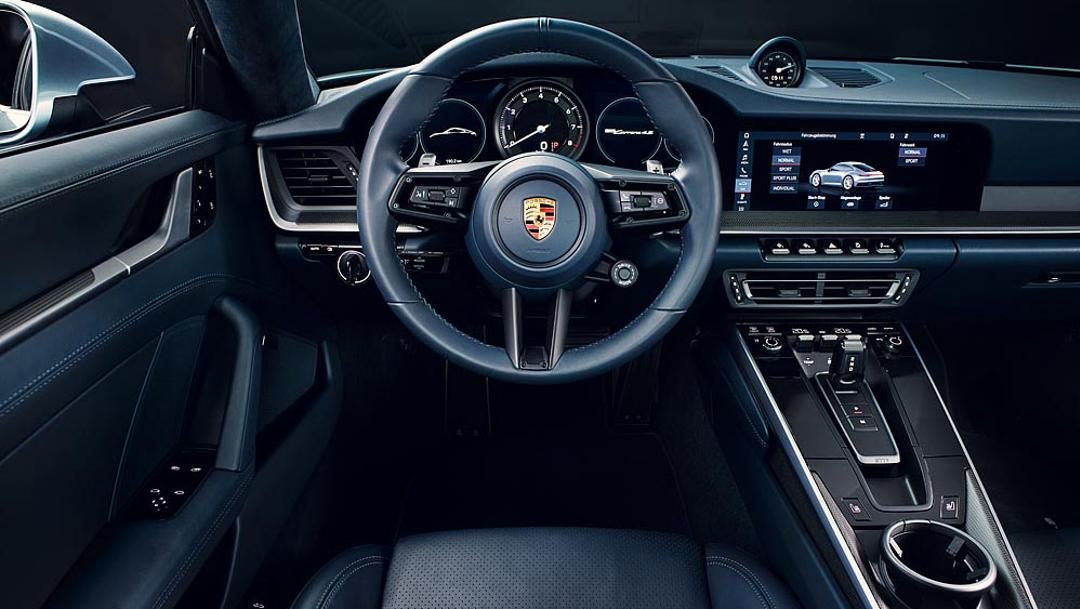Introduction
It has already been a few months since the ascension of the 992 Porsche 911, yet the swan song for the previous-generation 991 is only just beginning its chorus. Starring the 2019 Porsche 911 Speedster, the grand finale for the now outgone iteration is a celebration of both milestones and achievements.
The new Speedster was first unveiled as a concept during the Goodwood Festival of Speed in July 2018 – a time which also coincided with the 70th anniversary of Porsche sports cars – where they had described the philosophy behind the Speedster as simply, “a pure driving experience”. Fast forward to April 2019, where Porsche had officially green-lighted production of the Speedster at the New York Auto Show.
The Porsche 911 Speedster is the beneficiary of Stuttgart’s latest fixings, while also serving as a throwback to the Porsche 356 – the very first Speedster model. This schematic has forged a 911 with a silhouette based on the 4S Cabriolet body, carbon fibre bits borrowed off the 911 R, and front and rear bumpers from the GT3 Touring. That is not to say that there aren’t any unique offerings on the Speedster, with its shorter, more inclined windshield frame and lower fly-line being amongst its exclusive features.
As originally advertised, the car is powered by the same 4.0L, naturally aspirated, 9000 rpm unit used in the 991.2 GT3; for good measure, Porsche has kindly gone and wrung an extra 10-horsepower out of it too, just for the Speedster. They’ve also done nothing to disappoint the purists, with the same brilliant 6-speed manual transmission – offered in some 991.2 GT3 examples – mated to this legendary flat-6 boxer engine.
With just 1,948* units to be produced, the 2019 Porsche 911 Speedster is a car in its own right. It will be extremely rare. It will be undeniably unique. And with a price starting at $277,000 USD, it will be lavishly expensive.
But most importantly, the Speedster is everything – that was, is and will be – wonderful about the Porsche 911.
*an homage to the first year that Porsche began to produce sports cars, and hence its 70th anniversary in 2018
Engine & Performance
At the heart of the Porsche 911 Speedster is a slightly tweaked version of the most current 911 GT3 engine, which now produces 502-horsepower @ 8,400 rpm and 346 lb-ft of torque @ 6,250 rpm.
The Speedster’s engine is able to extract an additional 10-horsepower from the GT3 unit, with the help of bolstered fuel injectors. Specially designed individual throttle bodies improve the engine response of the already pedal-happy 9,000 rpm redline, naturally aspirated power plant. Porsche claims that this engine is the most refined, most efficient and best performing version to come from the GT3 family.
Delivering power to the rear wheels is a 6-speed manual transmission, which like the engine, is also borrowed from the most recent iteration of the 991 GT3. This is the only transmission option available, as the manual gearbox is preferred by Porsche over the technically superior PDK in favour of a more tactile driving experience. While banging through the gears will never be as efficient as what the dual-clutch system delivers, this manual transmission is as precise and smooth as one can get; an absolute pleasure to drive with.
Overall the numbers are ultimately impressive, especially considering the Speedster’s relative lack of modern enhancements that seem to be part and parcel of what is required to make a fast car these days. The Porsche 911 Speedster is able to sprint from 0-60 mph in just 3.8 seconds – all in the absence of turbochargers, all-wheel-drive and a dual-clutch transmission.
Chassis & Handling
The Porsche 911 Speedster shares an array of suspension and handling components with the GT3 and 911 R which includes a fine-tuned adjustable sports suspension, torque vectoring system, and four-wheel steering. Overall, the Speedster sits about 5 millimetres higher off the ground than its compatriots and its spring rates offer more refinement and ride quality.
Compared to its donors, the Speedster is clearly and deliberately set up to focus more on driving pleasure rather than Nurburgring (or any other track, for that matter) lap times. The carbon ceramic brakes – 410 mm vented/perforated discs up front, 390 mm in the rear – also utilize softer compounds in favour of more user-friendly modulation and improved urbanity. The car meets the road with a set of 20” Michelin Pilot Sport Cup 2 tires, which provide plenty of street-legal grip.
The first public test-drives of the Speedster took place along the winding country roads in Sardinia. The Speedster negotiated the often rough and uneven Italian terrains with absolute confidence; not only with its performance, but also its comfort and the peace-of-mind it provided the driver. The aforementioned suspension tweaks allowed the car to glide smoothly over imperfections without having to worry about scraping the undercarriage, or chipping a tooth while hopping over jarring surfaces.
Thanks in huge part to the talismanic three-pedal, 6-speed manual transmission, the Speedster feels as raw, connected and spirited as a 911 could possibly be. Minimalism is not lost on the rest of the car either, and to good effect, with a button-free steering wheel, short-shifting gear lever, and relatively spartan interior further emphasizing driving purity at its pinnacle. The Speedster still comes standard with stability control and traction control, but these can be dialed down for drivers who wish to induce a higher degree of rear slip angle, with a simple push of the “ESC OFF” switch.
The Speedster delivers a masterclass all-around performance of 911-awesomeness, and truly is as Porsche had set it out to be – a “pure driving experience”. At the end of the day, the car should not be mistaken as a docile or watered-down version of a GT-line car, because that is simply not the case. It is just as engaging and visceral as any of the cars it is based on, with just the right amount of elegance added to make it perhaps even more appealing than the others.
Design, Styling & Interior
Aside from the aggregate of undertones which make it undeniably-911, the Speedster was designed to be different from anything else that Porsche has ever made. Most notable is essentially what gives the Speedster its name; the manual-folding, weatherproof soft-top which stores under a distinctive clamshell tonneau behind the driver. To further accommodate the design, the windshield inclines at a sharper angle while the side windows become more stocky at full extension. This gives the Speedster the lower fly-line that is attributed to its previous iterations, which becomes all the more distinguishable once seated inside the cabin.
The interior does nothing to detract from the overall design elements of the Speedster, with simplicity and function taking precedence over luxury and convenience. There is no lack of driver-focused comforts provided by amenities such as the snug, perfectly bolstered sport bucket seats and ideally-located controls; however, normally expected refinements such as door handles and PCM/climate control are replaced with door straps, or in the latter case, nothing at all.
As expected from a limited-edition Porsche, there is hardly a lack of finer details even in a spartan interior. As an option, the standard black leather interior can be complemented with red stitching, as well as having the “Speedster” designation imprinted in the headrests. This option also includes red door straps and the GT Sport steering wheel with a red centre marker. Many of the interior panels are made from carbon fibre.
Buyers who opt for the most extreme option – known as the Heritage Design Package – will get a silver and white two-tone paint job (similar to the concept), and a special livery which includes door numbers and Porsche decals on the side of the car. Also as part of the package, the brake calipers are painted black and the wheels are finished in an exclusive platinum satin finish. Cognac leather also replaces the standard black leather; and to ensure the exclusivity of it all really hits the mark, is a custom Speedster-inspired Porsche Design chronograph made specially for the lucky new owner.
Pricing gets
So here’s where things get a bit crazy but in a less than surprising fashion, really. With production numbers capped at just 1,948, the Speedster will be – for lack of a better term – ‘appropriately priced’. This means that it won’t come cheap, and with an MSRP starting at $274,500 USD, the Speedster is about twice the cost of the GT3 on which it is based, and nearly the same price as the GT2 RS; and this is without any of the options added, which will send the price well north of $300,000 USD.
Dealers began filling orders on May 7, 2019, and with the entire allocation rumored to be already spoken for, all examples should be in the hands of their new owners by the end of this year.
Performance & Specifications Summary
Model & Price Info
| Make |
Porsche |
| Model |
911 |
| Generation |
991 |
| Sub-Model |
Speedster |
| Car type |
Convertible |
| Category |
Limited Series Production Car |
| Built At |
Zuffenhausen, Germany |
| Introduced |
2019 |
| Base Price (US) |
$274,500 |
| Units built |
1,948 |
Chassis, Suspension & Powertrain
| Curb Weight |
1,465 kg (3,230 lbs) |
| Layout |
Rear-engined, rear-wheel drive |
| Body / Frame |
Aluminum-steel composite monocoque, carbon fiber elements |
| Suspension (F) |
MacPherson strut suspension with lightweight springs (including helper springs), anti-roll bar, fully ball-jointed mountings |
| Suspension (R) |
Multi-link axle with lightweight springs (including helper springs), anti-roll bar, fully ball-jointed mountings |
| Steering |
Electro-hydraulic; power-assisted |
| Brakes |
Carbon Ceramic Discs (410 mm front; 390mm rear); Aluminum Calipers (6-piston front; 4-piston rear) |
| Tires |
Michelin Pilot Sport Cup 2 |
| Transmission |
6-Speed Manual |
Engine & Output
| Engine |
Flat-6 |
| Displacement (Litres) |
4.0L |
| Position |
Boxer, 90° |
| Aspiration |
Naturally Aspirated |
| Power (hp) |
502 hp @ 8,400 rpm |
| Power (hp) / litre |
125.5 hp / litre |
| Power (hp) / weight |
0.34 hp / kg |
| Torque |
346 lb-ft @ 6,250 rpm |
| Average Fuel Consumption |
13.8 L / 100 km (combined) |
Performance, Acceleration & Braking Stats
| Top speed |
193 mph |
| 0 – 60 mph |
3.8 s |
| 0 – 62 mph |
4.0 s |
| 0 – 100 mph |
8.0 s |
| 0 – 125 mph |
12.2 s |
| ¼ mile (standing) |
11.7 s |
| 124 mph – 0 |
TBD |
| 62 mph – 0 |
TBD |
Gallery & Videos
Image Gallery
The Speedster sets itself apart from any other 911 ever made, thanks to Porsche’s modern take on a classic, and sure-to-be timeless design. Reminiscent of the circa 1948 Porsche 356 “No. 1” Roadster, the soft-top compartment lid with its double-bubble shell case is the aesthetic landmark of this very limited edition vehicle.
In my opinion, the Porsche 911 Speedster is an interesting concoction of extroversion, uncanniness and classic design elements – the formula for an ideal balance of function and form – that makes for a car worthy to represent all that is good about the 911 and by extension, the Porsche brand as a whole.
Video Review Gallery
Here are some YouTube video reviews from some of my favorite car reviewers and auto personalities. All of them provide feedback from an “everyday guy” perspective – but aren’t afraid to thrash the car around a racetrack when given the opportunity – providing commentary that is both technical and easy to absorb.
Carfection’s Henry Catchpole provides a wonderful review of the Speedster while driving through the winding roads of Sardinia, starting off with a warm-felt tribute to the 356.
[embedded content]Next,
Tony Crawford, Founder of CarAdvice.com, gives his down-under take on the Speedster. Though he admits to not being a 911-phile to begin with, Tony is unapologetically swooning over the Speedster while he rows through its gears throughout the video.
[embedded content]
The team at Netherlands-based AutoWeek, put together this comprehensive vlog chronicling their experience with the Speedster. The subject matter technical, and the imagery is engaging.
[embedded content]
Last but not least is Porsche’s official cinematic for the car.
[embedded content]
Original Press Release
New 911 Speedster goes into production
05/07/2019 | The 911 Speedster already caused a sensation when it was presented as a concept vehicle. Now Porsche is putting the open-top two seater into production.
The 911 Speedster combines the aspiration of a puristic, driver-oriented vehicle with motor sports technology suitable for everyday use. The 911 R (2016) and 911 GT3 served as a basis for development. A high-revving 375 kW (510 PS; Fuel consumption combined 13.8 l/100 km; CO2 emissions combined 317 g/km) four-litre naturally aspirated boxer engine delivers an emotive sound experience in the cockpit. The six-speed GT transmission is shifted manually. Visually, the new Speedster establishes a bridge to its own history – to the forebear of all Porsche sports cars, the 356 “No. 1” Roadster from 1948. The limited edition of the new 911 Speedster is also reminiscent of this vehicle. Exactly 1,948 units will be manufactured from mid-2019 at the Porsche plant in Zuffenhausen, Germany.
As a concept vehicle, the 911 Speedster celebrated its world premiere in 2018 at the ceremony for the “70 Years of Porsche Sports Cars” anniversary in Zuffenhausen. Other public appearances followed at the Goodwood Festival of Speed, the Rennsport Reunion VI in Laguna Seca, California as well as the Paris Motor Show in October. Numerous Speedster elements that characterise the concept vehicle can now be found in the same or similar design on the series production model.


Taking centre stage is the aesthetically shaped convertible top compartment lid with its double-bubble streamliners – a quintessential feature of this sports car type ever since the 911 Speedster from 1988. It is the largest and most complex component to date that Porsche has used in a road model made of a single piece of carbon-fibre reinforced plastic. Two trim elements in the double bubbles make room for the roll-over protection system as need, included in the two-seater as a standard feature just like in the 911 Carrera Cabriolet.
A weight-saving roof structure replaces the basic tonneau cover of the concept vehicle. Despite its puristic design, the fabric convertible top is suitable for everyday use. Together with the shortened window frames with their lowered cowl top panels and the smaller side windows, it gives the 911 Speedster its athletic profile. The excitingly low fly line already characterised historic designs such as the Porsche 356 Speedster from 1954.


The convertible top takes no effort to operate: the central locking hook at the windscreen frame and both the side fins of the fabric roof are released at the push of a button. The large rear lid made from lightweight carbon fibre is electrically unlocked and slides back a short distance, is then positioned by hand and makes room for the fabric roof, which folds into a Z shape behind the front seats. The cover can then be closed again effortlessly once the roof has folded into position. The roof is closed again in the same way – only the roof fins on the left and right of the streamliners have to be pressed by hand into their holders until they perceptibly engage.
Rear spoiler and rear apron of the 911 GT3 Touring
Lightweight design also dictates other body components of the Speedster. The carbon-fibre composite bonnet – which weighs in two kilograms lighter than on the 911 GT3 – and the carbon-fibre composite wings are originate from the 911 R. The front apron was borrowed from the GT3, but the front spoiler lip is a completely new development. Instead of the Talbot mirrors used on the concept vehicle, the production version of the new Speedster features electrically adjustable and heated Sport Design exterior mirrors. The extending, aerodynamically tuned rear spoiler and rear apron have been adopted from the 911 GT3 Touring for the Speedster.
The interior is characterised by black leather elements for the side bolsters and head restraints of the carbon-fibre composite full-bucket seats, the armrests in the door trims and the shortened gear lever. The centre panels of the seats are upholstered in perforated leather, while the lightweight door panels with black door pulls and stowage nets reduce the overall weight.


“Speedster” logos adorn the head restraints and the visible carbon door sills as well as the central rev counter. Like the other instruments, it has black dials with white needles as well as green digits and scales – features reminiscent of its famous forebear, the Porsche 356 Speedster. A limited-edition badge on the cross structure behind the front seats shows the serial number of the 911 Speedster, which is limited to just 1,948 units.
Porsche also optionally offers the new 911 Speedster with a Heritage Design package. Created by Style Porsche and implemented by Porsche Exclusive Manufaktur, this equipment version reinterprets classic elements from the 1950s and 1960s. This includes the interior colour scheme in Black and Cognac with golden details. Special “spears” paintwork in White for the front fascia and front wings is applied to the basic vehicle paintwork in GT Silver Metallic. Historic looking Motor sports decals for the doors and front lid complete the package. Owners can select their own maximum two-digit start numbers like shown in the photos. The Porsche crests and the gold-coloured logos correspond to the designs used in the 50s and 60s.
High-revving engine with 510 PS
The heart of the new Speedster is adopted from the 911 GT3. The naturally aspirated six-cylinder boxer engine with four-litre displacement is a pure GT engine. The peak power of 375 kW (510 PS) is reached at 8,400 rpm, with the maximum engine speed at 9,000 rpm. The engine delivers a maximum torque of 470 newton metres at 6,250 rpm. The new 911 Speedster accelerates from zero to 100 km/h in 4.0 seconds and reaches a top speed of 310 km/h.
Compared with the previous 911 GT3, the engine in the Speedster is fitted with two gasoline particulate filters (GPF) and complies with the emission standard Euro 6d TEMP EVAP-ISC (EU6 DG). However, the four-valve engine still manages ten PS more. This is due to improvements to detail such as the high-pressure fuel injectors with optimised spray pattern as well as a modified intake system with individual throttle valves, which enable a more spontaneous response to throttle commands. The newly developed lightweight stainless steel sports exhaust system weighs 10 kilograms less – including the two particulate filters.
Befitting its status as a driver’s car, Porsche only offers the 911 with a manual six-speed sports transmission. It features an auto-blip function which precisely and independently compensates differences in engine speed between the gears when downshifting through automatic throttle blips. Auto-blip can be activated at any time, in other words also independently from the chosen PASM (Porsche Active Suspension Management) variable damping system setting. A mechanical rear differential lock with asymmetric locking action rounds off sporty power transmission.


The GT philosophy behind the new Speedster is also reflected in its chassis. With its sporty rear-axle steering and dynamic engine mounts, the chassis is based on the technology of the 911 GT3 and 911 R. Control systems such as Porsche Torque Vectoring (PTV), Porsche Stability Management (PSM) and PASM with sports tuning and lowering by 25 millimetres have been precisely adapted to the new requirements. The open-top two-seater runs on 20-inch forged Speedster alloy wheels with central locks. The standard equipment includes PCCB brakes (Porsche Ceramic Composite Brake) with internally vented and perforated ceramic composite brake discs.
Chronograph
Porsche Design Timepieces has also produced special chronographs for the new 911 Speedster, likewise limited in number to 1,948: the Porsche Design “911 Speedster chronograph” and the “911 Speedster Heritage Design chronograph” can be ordered exclusively by future owners of a new Speedster model at Porsche Centres around the world from May 2019.



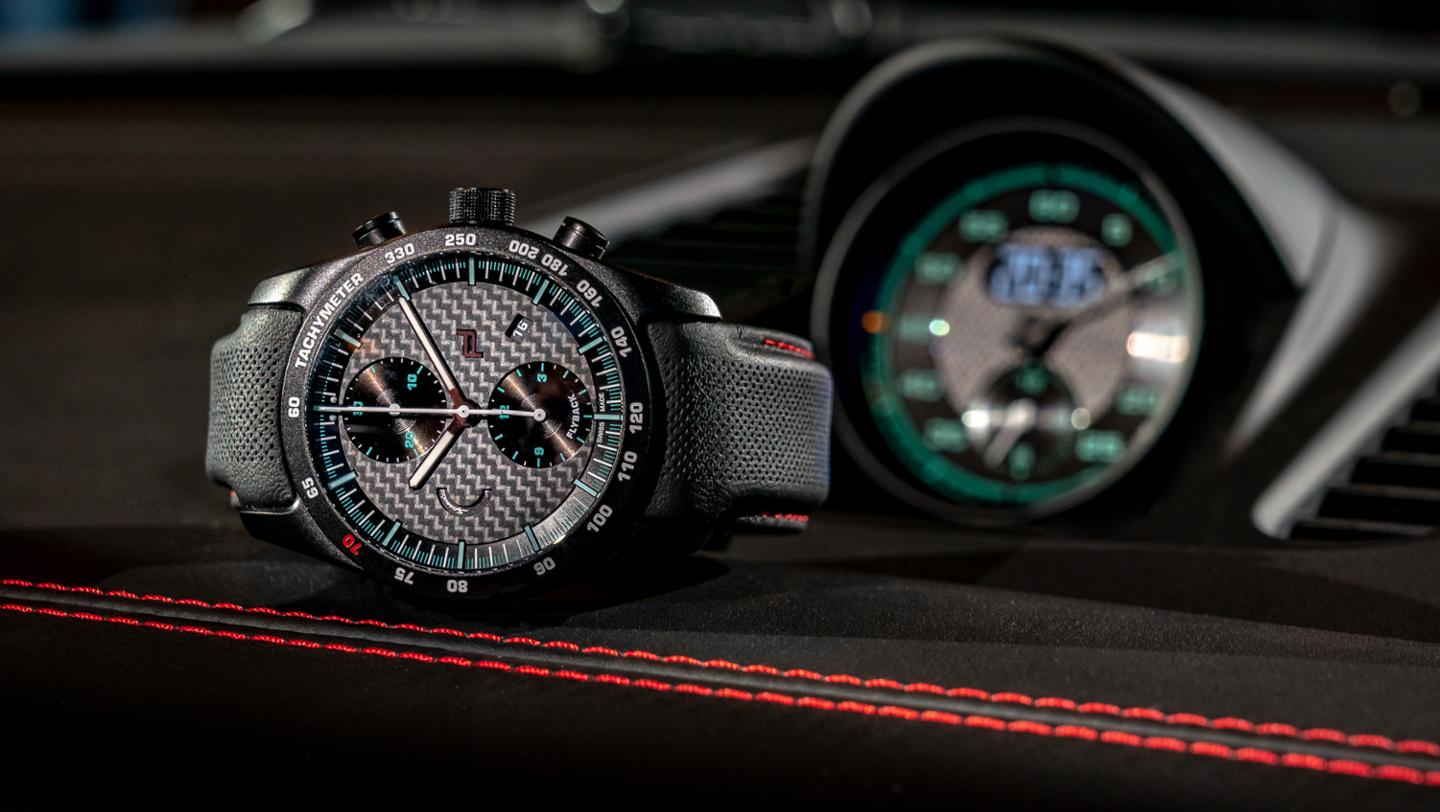
Consumption data
911 Speedster: Fuel consumption combined 13.8 l/100 km; CO2emissions combined 317 g/km
Final Verdict
As my fellow Supercars.net colleague, Nick Dellis once remarked, “The world is full of armchair commentators when it comes to cars. At Supercars.net we have a number of journalists and automotive publications we rely on when we want to get unbiased opinions from people we admire.”
Below are snippets from some of our favorite car reviewers and automotive personalities regarding the Porsche 911 Speedster As always, we ask that you support the amazing publications they release, so that the automotive community continues to benefit from the hard work and enthusiasm they put into providing us with content that we love.
Autocar – “Porsche’s fabled GT-car division turns out the 991-generation lights in spectacular fashion” – 5/5

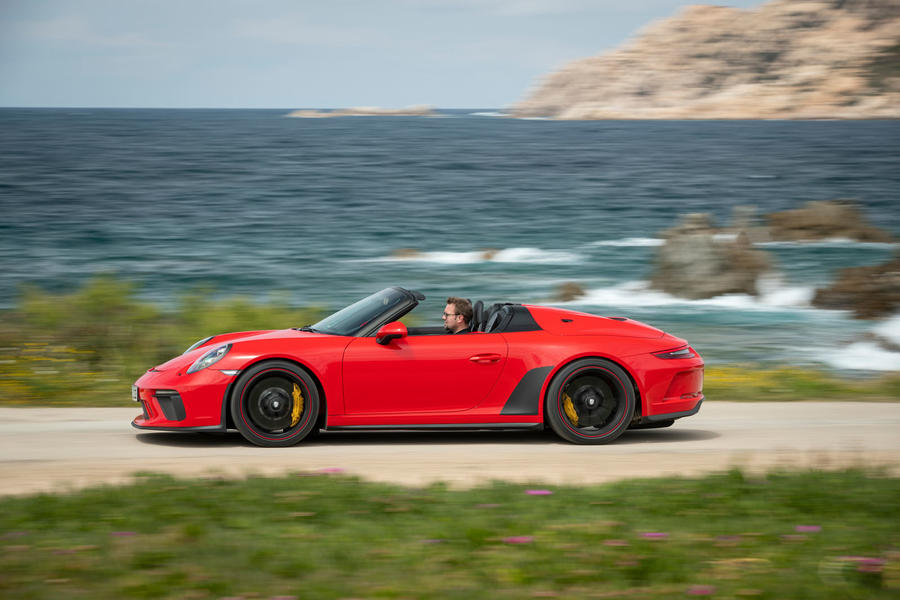
Richard Lane from Autocar is well-versed in Porsche nomenclature, and his review of the Speedster is both historically-centric and detail oriented.
Knowing what he knows, the Speedster was almost everything he expected – it didn’t surprise him one iota, as he remarked that “Given the ingredients, it doesn’t take a genius to work out that the Speedster must be mind-blowing on the road – and it is.”
On that same trajectory, there is no doubt that its price raises his brows somewhat. However, acknowledging all that the Speedster is set out to be, perhaps the perception of what money is gets distorted when in the realm of owning the car.
He ends off his review stating, “Were it our money, we wouldn’t hesitate, because finally Porsche knows exactly what its hip-high Speedster needs to be, and the result is breathtaking.”
The Good
- Linear power delivery and incredible throttle response
- Car remains rigid despite no fixed roof
- Mechanical grip better than expected
The Bad
- Interior feels smaller than it actually is, some visibility issues
- Four-wheel steering system could be improved
More: Read full review
Car Magazine – “Icing on the cake” – 5/5

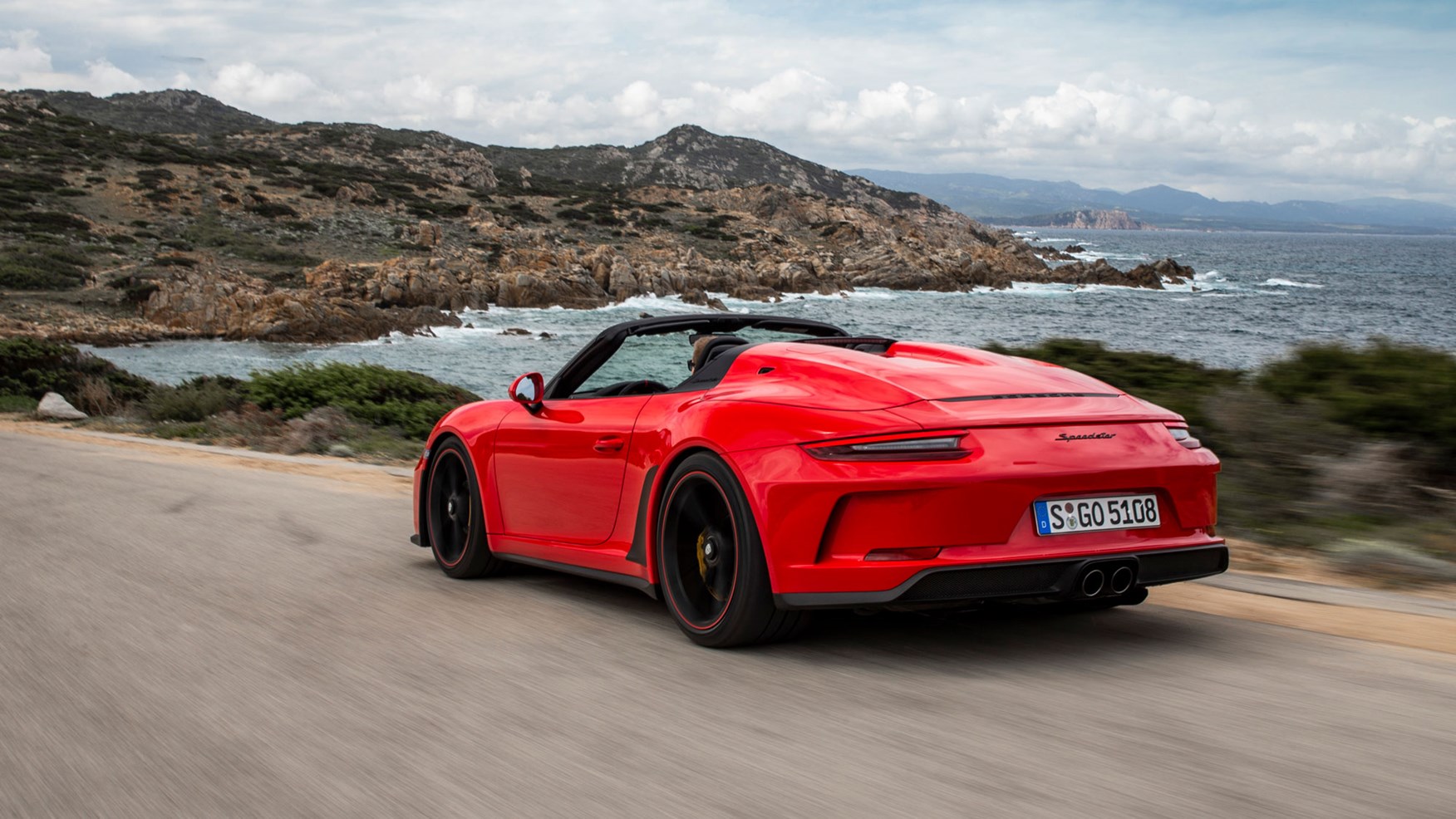
Car Magazine’s Kyle Fortune was another one of the lucky journalists to take the Speedster for a drive in Sardinia, remarking that “It’s more about driving, and here it delivers, with mesmerising cross-country pace.”
Kyle is as infatuated as anyone else by the Speedster’s purity, even going as far as saying that “…it’s the sheer joy of the feel and feedback that make the Speedster stand out, even from the exquisite 911 R.”
His final verdict: “I want one”.
The Good
- Ultimate driver’s car
- Chassis uncorrupted by being roofless
- Manual transmission is as precise and quick as they come
The Bad
- All Speedsters have already been spoken for
- Heritage Desig/n Pack not really worth the money
More: Read full review
Car Advice – “Does it get any better than this?” – 8.8/10


Tony Crawford of Australian-based Car Advice is absolutely in love with the Speedster, but his pragmatism prevails when it comes to its price – and this is primarily what prevents him from giving the car closer to a 10-rating.
In his own words he summarises,
“It’s a hugely expensive car that is easily outpaced by lower-priced versions in the 911 range, and yet such a limited production run has ensured that all 1948 cars are already spoken for. And that’s by buyers that haven’t yet driven the car.
It clearly demonstrates just how low on the priority scale outright performance figures can be. In the end, the Speedster is a purebred road car and one of the most accomplished sports cars on the planet, as well as one of the most enjoyable cars ever from behind the wheel.
I never thought I’d ever say that about a 911 soft-top, but this car is a spectacular triumph in every regard bar its sky-high asking price.”
The Good
- Six-speed manual mated to 4.0 flat-6 is a match made in heaven
- Huge grip levels
- Throttle response off the charts
The Bad
- Huge price bump above a 911 GT3 Coupe
- Racing-style bucket seats can get tiresome
More: Read full review
My Final Verdict – 4.5/5
Make no mistake that the Speedster is an absolutely fitting conclusion to the 991-generation, which by my accounts, has been the best overall iteration of the 911 so far. It truly does represent everything we have come to love, and will continue to love, about the Porsche 911.
We are now living in a time where emissions regulations heavily influence automakers’ outlooks and decision making. As a result, electric vehicles are beginning to stake claim in mainstream thought. While I am all for change and doing what is right for the future, the Speedster’s homage to how things used to be – and in an ideal world, how they could continue to be – brings a welcome smile to my face. The Speedster is truly a time capsule of what could end up being a defining era in human civilization.
The Porsche 911 Speedster is an ingenious amalgamation of the latest technologies on offer, and the more simple ingredients that have been a principle of driving enjoyment since the invention of automobiles. A 502-horsepower engine, without turbochargers. A modern transmission, with just one clutch. A state-of-the-art suspension and chassis, with an unsullied purity. The list goes on.
Perhaps the only drawback is that the Speedster’s rarity and price precludes any sense of being able to really relate with the car. It feels like the car inhabits another plane of existence, and that seeing one in person seems unfathomable as I can only imagine them occupying spaces deep underground in private collections, shielded from the real world and the sands of time. Quoting myself earlier, ‘The Speedster is truly a time capsule…’, and this is a bit hard for me to get over.
Rivals
McLaren 600LT Spider
Ferrari 488 Pista Spider
McLaren 720S Spider
Porsche 911 GT3
Porsche 911 Turbo S Cabriolet














